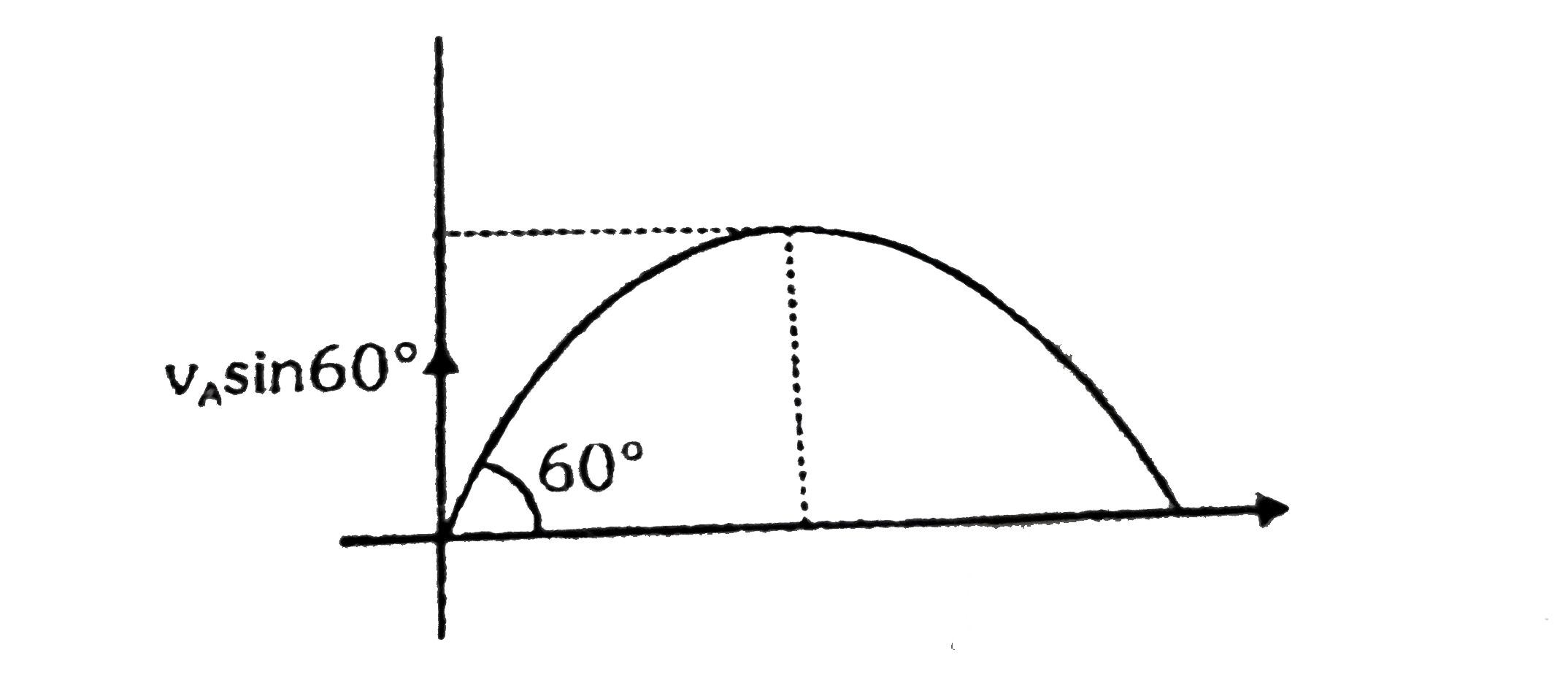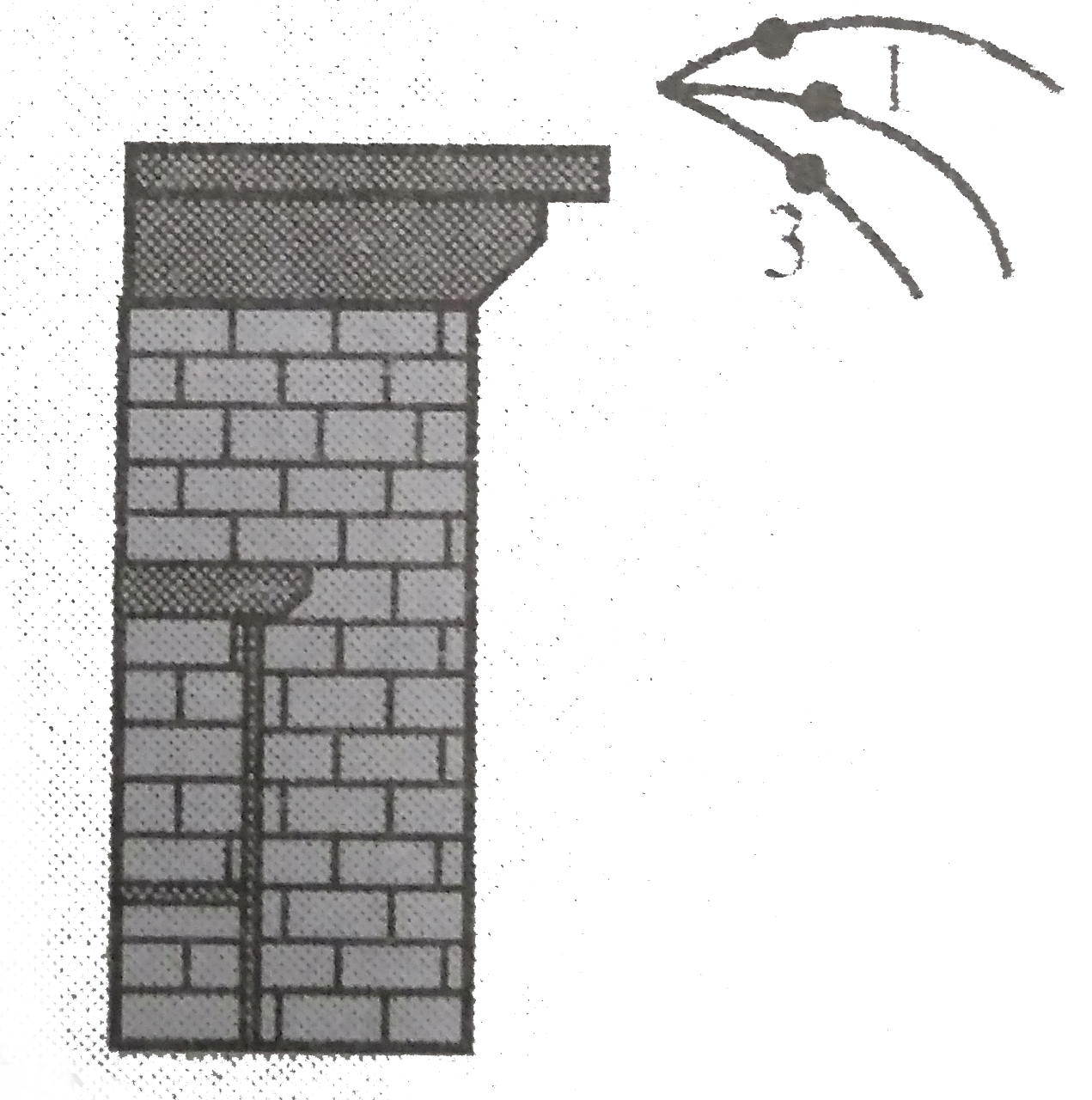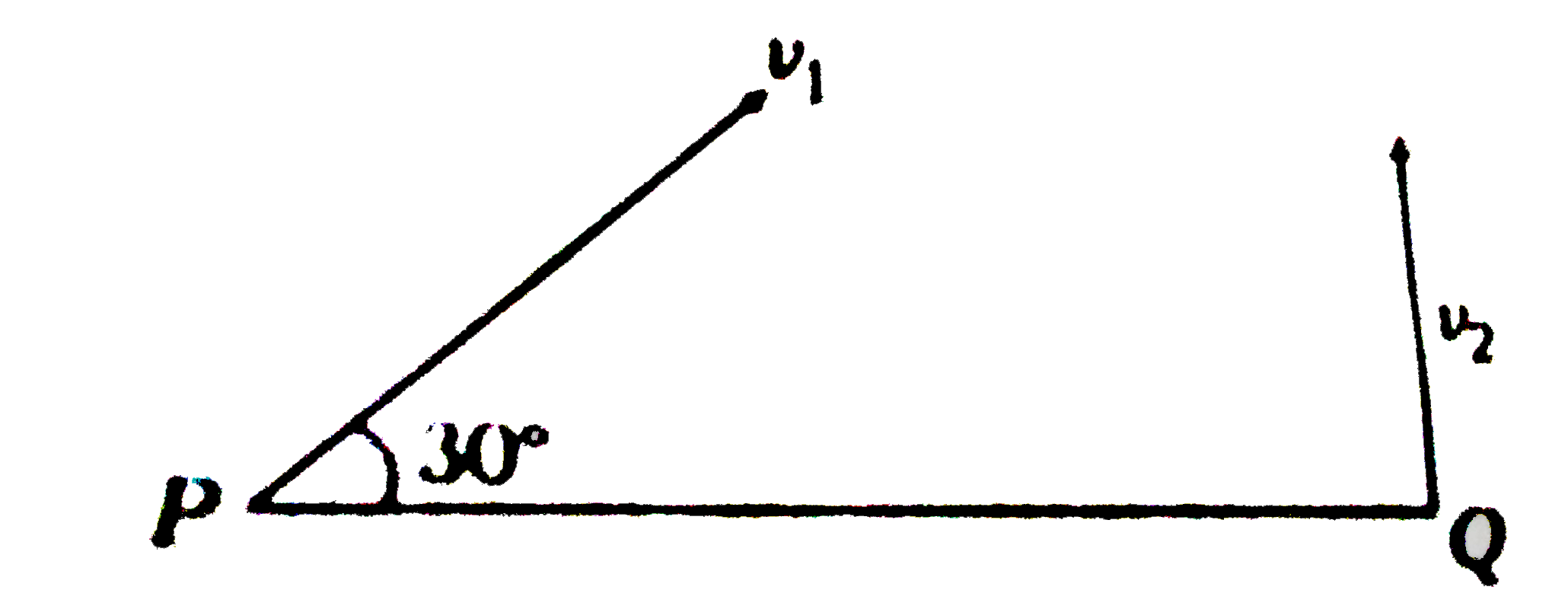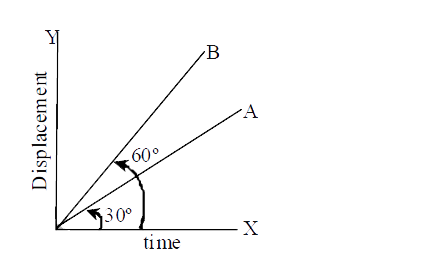A particle A is projected with speed vA from a point making an angle 60∘ with the horizontal. At the same instant, a second particle B is thrown vertically upwards from a point directly below the maximum hieght point of parabolic path of A with velocity vB. If the two particles collide then the ratio of vA/vB should beSolution in Gujrati
1
2√3
√32
√3
The correct Answer is:B
At maximum height vertical component of velocity becomes zero.
v2=u2+2as

For A : 0=v2Asin260∘−2gh
2gh=v2Asin260∘=v2A(3/4)
vA=√8gh3
For B : 0=v2B−2gh
vB=√2gh,vAvB=2√3
Topper's Solved these Questions
- BOOK - ALLEN CHAPTER - KINEMATICSEXERCISE - EXERCISE-036videos
KINEMATICS
- BOOK - ALLEN CHAPTER - KINEMATICSEXERCISE - Assertion-Reason20videos
KINEMATICS
- BOOK - ALLEN CHAPTER - KINEMATICSEXERCISE - EXERCISE-0155videos
KINEMATICS
- BOOK - ALLEN CHAPTER - ERROR AND MEASUREMENTEXERCISE - Part-2(Exercise-2)(B)22videos
ERROR AND MEASUREMENT
- BOOK - ALLEN CHAPTER - KINEMATICS (MOTION ALONG A STRAIGHT LINE AND MOTION IN A PLANE)EXERCISE - BEGINNER S BOX-78videos
KINEMATICS (MOTION ALONG A STRAIGHT LINE AND MOTION IN A PLANE)
Similar Questions
The equation of one dimensional motion of the particle is described in column I. At t=0, particle is at origin and at rest. Match the column I with the statement in Column II.
Column IColumn II(A)x=(3t2+2)m(p)Velocity of particle at t=1s is 8m/s(B)v=8tm/s(q)Particle moves with uniform acceleration(C)a=16t(r)Particle moves with variable acceleration(D)v=6t−3t2(s)Particle will change its direction some time06:13View SolutionAssertion: A projectile is thrown with an initial velocity of (aˆi+bˆj)m/sec. If range of projectile is maximum then a=b.
Reason: In projectile motion, angle of projection is equal to 45∘ for maximum rang econdition.02:52View SolutionA bird moves from point (1,−2,3) to (4,2,3). If the speed of the bird id 10m/s, then the velocity of the bird is :-
03:24View SolutionA cube has a side of length 1.2×10−2m. Calculate its volume.
03:40View SolutionA football player kicks a ball at an angle of 30∘ with an initial speed of 20 m/s. Assuming that the ball travels in a vertical plane, calculate (a) the time at which the ball reaches the highest point (b) the maximum height reached (c) the horizontal range of the ball (d) the time for which the ball is in the air, (g=10m/s2)
05:12View SolutionTwo particles A and B projected simultaneously from a point situated on a horizontal place. The particle A is projected vertically up with a velcity vA while the particle B is projected up at an angle 30∘ with horizontal with velocity vB. After 5s the particles were observed moving mutually perpendicular to each other. The velocity of projection of the particle vAandvB respectively are:
01:54View SolutionA particle A is projected with speed V_(A) from a point making an angle 60^(@) with the horizontal. At the same instant, second particle B( lie in the same horizontal plane ) is thrown vertically upwards from a point directly below the maximum height point of parabolic path of A , with velocity V_(B) . If the two particles collide then the ratio of V_(A)//V_(B) should be :
09:20View SolutionA particle A is projected with speed V_(A) from a point making an angle 60^(@) with the horizontal. At the same instant, a second particle B is thrown vertically upwards from a point directly below the maximum height point of parabolic path of A, with velocity V_(B) . If the two particles collide then the ratio of V_(A)//V_(B) should be:
04:42View SolutionThree identical balls are thrown from the top of a building, all with the same initial speed. As shown in figure., the first ball is thrown horizontally, second above horizontal level, and third at an angle below the horizontal. Neglecting air resistance, rank the speeds of the balls at the instant each hits the ground.
 06:18View Solution
06:18View SolutionA projectile A is thrown at an angle 30∘ to the horizontal from point P. At the same time, another projectile B is thrown with velocity v2 upwards from the point Q vertically below the highest point A would reach. For B to collide with A the ratio v2v1 should be
 02:29View Solution
02:29View SolutionA particle A is projected with speed vA from a point making an angle 60∘ with the horizontal. At the same instant, a second particle B is thrown vertically upwards from a point directly below the maximum hieght point of parabolic path of A with velocity vB. If the two particles collide then the ratio of vA/vB should be
06:09View Solutionकिसी कण के सापेक्ष वेग क्या अभिप्राय है ? दो कण A तथा B एक सीधी सड़क पर एक ही दिशा में क्रमश :vA एवं vB वेग में गतिशील हैं। दिखाइए कि कण A का कण B के सापेक्ष वेग vAB=vA−vB.
01:55View Solutionदो कणो A तथा B के विस्थापन - समय ग्राफ सरल रेखाएँ है जो समय अक्ष से क्रमशः 30∘ तथा 60∘ के कोण बनाती है यदि कणो के वेग क्रमशः vA तथा vB हों तो VA/vB होगा :
View SolutionA particle is projected with a speed V from a point O making an angle of 30^(@) with the vertical. At the same instant, a second particle is thrown vertically upwards with a speed v from a point A. The two particle reach H, the highest point own the parabolic path of particle one simultaneously. Then ratio V/v is-
05:57View SolutionFrom the adjoining displacement-time graph for two particles A & B the ratio of velocitiesvA:vB will betime
 04:52View Solution
04:52View SolutionTwo particles A and B are thrown simultaneously from two different floors of tower having distance d between them.Velocitiy of particle A is v_(A) at angle alpha from horizontal while velocity of particle B is v_(B) at an angle beta from horizontal.If two particles collide in mid-air,then find v_(A)/v_(B) .
03:34View Solution

